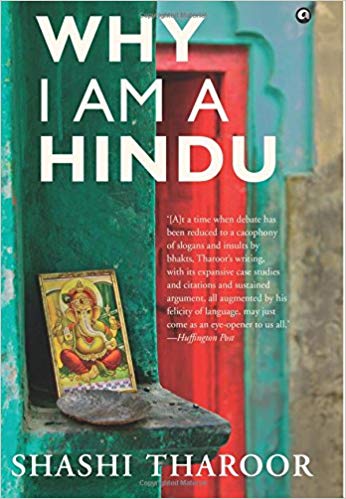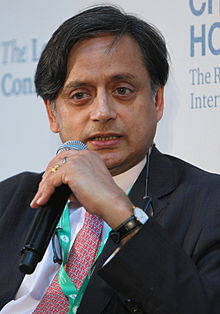Why I Am a Hindu Summary
<1 min read ⌚
 For most people, religion is an inherited prophecy and a cultural element that is passed from generation to generation.
For most people, religion is an inherited prophecy and a cultural element that is passed from generation to generation.
For others, it’s a deep connection with the ultimate source or one’s inner beingness.
The author tries to unveil the real essence of Hinduism and tackle the impurities!
Dive right in!
Who Should Read “Why I Am a Hindu”? And Why?
Indian mysteriousness has always been quite a thorn for European invaders, who wanted to label Indians one way or the other. They quickly discovered that cultural diversity and mysticism is widespread, which goes against the conventional classification of a group.
With that being said “Why I am a Hindu” recounts some historical events and personal dogma that shaped the author’s understanding of Hinduism.
Actually, we believe this book is an excellent addition not just for Hindus, but for all others who want to explore the depths of this enigmatic belief system.
 About Shashi Tharoor
About Shashi Tharoor
Shashi Tharoor is a distinguished Indian personality, politician and an international diplomat who is currently designated as a member of the Lok Sabha.
He is the author of a dozen books, which mostly relate to India’s ups and downs throughout the course of history.
“Why I Am a Hindu PDF Summary”
Shashi Tharoor, as an acclaimed author and renowned politician, starts by explaining the two key reasons for writing this book:
- To explore the virtues, aspects, and dispute points in Hinduism
- To share grave concerns regarding the vicious forms of Hinduism that rose to the surface in the 1980s.
His viewpoints regarding Hinduism fall under practicality; which means that he only exposes the virtues and facets that apply to the broader audience. Nonetheless, Shashi takes the safe side by explaining that his book doesn’t cover the entire scope of Hinduism.
He reflects only on those Hindu-aspects he finds appealing and meaningful. Bear in mind that if you disagree with the ideas presented by the author, you should stick to your path and follow your soul.
The book is divided into three sections
- Part 1: My Hinduism
- Part 2: Political Hinduism
- Part 3: Taking Back Hinduism
Before taking the fast track to explain Hinduism without omission, one might wonder about the Hindu origins? Who invented this term actually?
In many European languages including French – the word “Indian” is on the same wavelength as “Hindu.” As it turns out, the word Hindu refers to people living beyond the River Sindhu – modern day Pakistan.
Truthfully, Indian Language had no place for “Hindu” until Europeans brought it up. It was used to define the society they’ve laid eyes upon on their conquest of India, which the people later embraced it.
Shashi Tharoor shares his two main reasons for being Hindu:
- Cultural – He feels immensely proud of Indian history.
- Real Intellectual Understanding – As a person who has studied other religions, he believes that Hinduism is best suited for him.
The main driving force of being a Hindu is that Hinduism, unlike other religions, doesn’t profess false claims to gain popularity.
After all, having insights about a faith which allows you to stretch your imagination, without being subjected to hostile treatment is a great relief. This also means that a Hindu couldn’t be a heretic.
Without adhering to strict rules, you are more than welcome to apply your thoughts to anything. Indians are taught to be respectful towards others – it’s the very heart of diversity. Deviation from the original path is encouraged, and you can rightfully choose means to take you there.
Mahatma Gandhi, himself praised this form of integration and assimilation. There’s no worship policy, no thought-police; but a flexible system lacking rigid principles.
Since God represents the Alpha & Omega and is ever-present; this universal truth is commonly referred to as Nirguna. It’s an abstract element without attached qualities, shapes, and other features. With this in mind, the Vedas tend to use the pronoun “kasmai” (who?) that depicts the inconceivable God.
According to Shashi, people need visualization or something that can be worshiped. Apparently, the nirguna Brahman was not enough, even though this is the heart of Hinduism. This impelled the worshipers to conceptualize a form which can be recognized as Ishvara or Bhagavan.
The monotheistic faiths such as Christianity, Judaism, and Islam don’t have a divine source equivalent to Brahman. In layman’s terms – the Hindu’s Ishvara is the closest these religions can get regarding their knowledge of the universal power.
From the outset, Hinduism spontaneously absorbed other tribal religions and forms. In this endeavor, it embraced the doctrine of Mahavira, the founder of Jainism, while acting tolerantly towards his followers with regards to their belief system.
The same thing happened to Buddhism. Hindus turned the table around by attempting to assimilate Buddhism while referring to the Buddha as the reincarnation of Vishnu.
As you can see, Hindus, unlike its counterparts have no monopoly over a path one should take in order to get to the truth.
The tenets of practical Hinduism revolve around agnostic teachings that can bring you one step closer to realization. With regards to one’s cultural environment, place of birth, social conditions, a path will be formed.
No monopoly over the truth, and freedom to exercise your rational or agnostic belief. The path to salvation is not predetermined by the group or higher religious authority like a priest. It lies within the heart of the person; whose actions define its religious conviction.
Westerners and Indian Scholars believe that Hinduism is the only religion worldwide which doesn’t discard the invisible portrait of “God” introduced by other faiths. This very attribute depicts Hindus as henotheists; a group of believers which doesn’t underestimate other religious doctrines.
Even the British who spent quite some time in India failed to understand the core of the Indian culture. In an effort to comprehend Hinduism they created their own divisions.
Politics and Hindutva
According to the author, secularism has divided India and added to a moral deficiency. Comparatively, it stirred up religious extremism which undermines years of cultural evolution.
The secular project itself was brought to its knees due to this prevailing doctrine that threatens to tear it down.
From another standpoint, one can also pay heed to secularism through its terminological implications and realize its connection with dharma-nirpekshata. Introducing dharma on a national level is critical, but that mustn’t be done at the expense of the pluralist structure in India.
From its early days, India has been the center for multiformity and the existence of opposites. For a person to latch onto this insurmountable bulwark of truth, it must accept the magnitude of diversities which permeates all over the world.
Most of the Indians, not to mention Westerners, fail to recognize the real meaning of Hindutva. The author zooms in on this outspread concept in order to have a glimpse into its substance.
Savarkar invented or created “Hindutva” to showcase the virtues, qualities, and opportunities for living life as a Hindu. In addition, it’s good to know that this notion embodies the cultural, religious and national ideals.
In layman’s terms: A person who practices Hinduism, accepts India as his/her motherland (matrbhumi) and defends the holy land of his/her ancestors (pitrbhumi) can be “branded” a Hindu.
Evidently, not all things were easily distinguishable.
Hindutva and Hinduism still cannot find common grounds on a handful of topics, and many misinterpretations have risen to the surface as a consequence of this stalemate. The trove of Indian antique and mystique treasure is not on the same wavelength as Hindutva, to say the least.
The identity of India-ness struggles to incorporate the Hindutva element into its core message. A topic that raises a lot of eyebrows and instigates a personal and political debate.
If we take into consideration the King-subordinate aspect, we might conclude the ruler can hold the reins according to his raj dharma. This constitutional way of governance, mustn’t be underlined by the king himself, but by the unattached humanitarian rishis.
Indeed, some Indians reckon that the Indian Constitution was made on a whim. The creation process wasn’t not fueled by dharma and nobility, and it seems like the Indian Constitution is a brainchild of Britain.
The concept of dharma omits from its essential elements.
Shashi Tharoor finds it incredibly hard to agree with the follower-base of Hindutva. He strongly disagrees with the atrocities committed in the name of Hinduism and openly confronts them.
For precisely the same reason he asserts that liberalism as a political ideology is intertwined with Hinduism, to some extent. It advocates for freedom of thought, open-mindedness and that’s why he considers himself to be one.
In this book, he also points out Obama’s recent talk about cultural tolerance, according to which, Indians must live by as they did for centuries.
Key Lessons from “Why I Am a Hindu”
1. Religious Diversity is a Powerful Weapon
2. Total Disregard for Thought-Police
3. Liberalism and Strength
Religious Diversity is a Powerful Weapon
Economically, India lacks behind its Western counterparts, but when it comes to psychology and tolerance – it was and still is years ahead of its own time.
From the ancient scripts to modern-day interpretations of life, we can see that Indians have immense broadness in their way of perception.
Hinduism incorporates various forms and allows its believers to seek salvation in the way they deem fit.
Total Disregard for Thought-Police
Unlike most other faiths and doctrines, Hinduism prompts you to be yourself; and you’ll rarely be pestered about your religious convictions.
It’s a mental and philosophical luxury that should be exploited to the maximum extent.
Liberalism and Strength
Indian national identity is not easy definable as it is with most other countries. The main reason for this disputed point is the different understanding of being “Hindu” and “Indian.”.
We leave you be the judge of this ambiguous outlook.
Like this summary? We’d Like to invite you to download our free 12 min app, for more amazing summaries and audiobooks.
“Why I Am a Hindu Quotes”
We tend to reduce everyone else to the limits of our own mental universe and begin privileging our own ethics, morality, sense of duty and even our sense of utility. All religious conflicts arose from this propensity to judge others. Share on X Hinduism professes no false certitudes. Its capacity to express wonder at Creation and simultaneously skepticism about the omniscience of the Creator are unique to Hinduism. Share on X The soul continues from life-cycle to life-cycle, hopping from body to body as a caterpillar climbs onto a blade of grass and jumps to a new one. Share on X Be good so that you are reborn in a better situation in your next life than in the present one; if you are good, you may reappear as a king or a sage, whereas if you are bad, you might come back as an invalid or a mosquito. Share on X The Vedas teach that the soul is divine, only held in the bondage of matter; perfection will be reached when this bond will burst and the word, they use for it is, therefore, mukti—freedom, freedom from the bonds of imperfection, freedom… Share on XOur Critical Review
In all honesty, we didn’t have much knowledge regarding Hinduism prior to reading this book. It opened our eyes to the drawbacks of other religions and made us aware of the strongest features that describe Hinduism.
We find it highly informational and philosophical even. A remarkable assemblage of quotes, thoughts, and insights!
You should definitely pass through its key takeaways.
Emir is the Head of Marketing at 12min. In his spare time, he loves to meditate and play soccer.


 About Shashi Tharoor
About Shashi Tharoor




